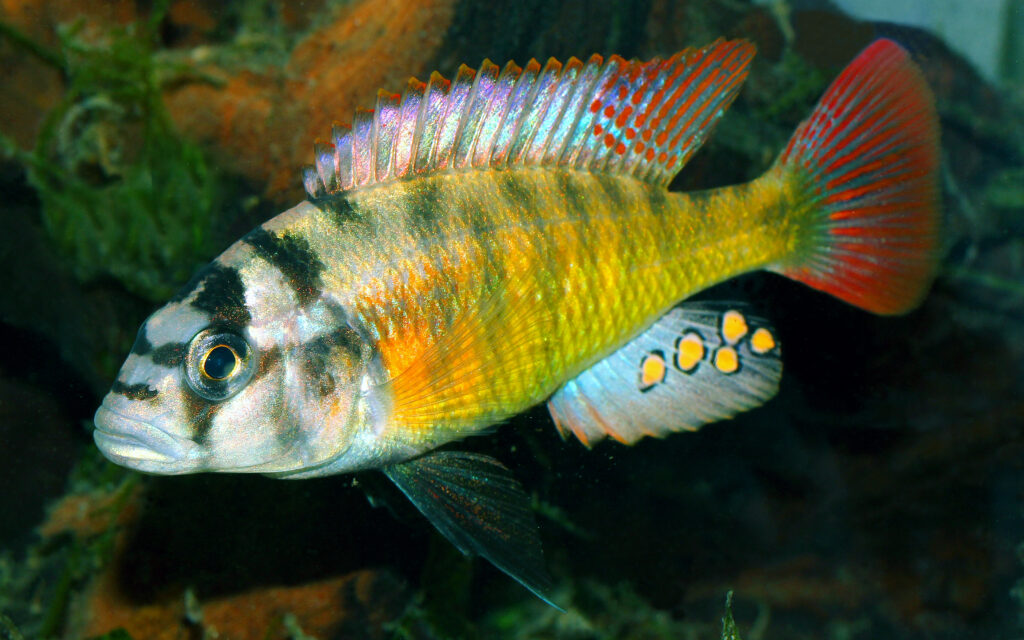
June 2025
Lake Victoria’s Haplochromine superflock
Images © Paul Loiselle
In honour of our Late Chair Dr Paul V. Loiselle, FFSG’s Species of the Month for June is the entire superflock of Lake Victoria’s endemic Haplochromine cichlids. These closely related small multi-coloured cichlids, generally known as Haplochromine cichlids or Fulu, provide an astounding example of adaptive radiation – morphologically, ecologically, and behaviourally. They were once the most speciose fishes in Lake Victoria with around 500 species. Unfortunately, many have yet to be described or studied by scientists, and many are now rarely seen and feared extinct. A combination of factors are believed to be the cause, including the introduction of the non-native invasive and piscivorous Nile perch, Lates niloticus, overfishing. Significant changes to the lake system from agriculture, including tea and cotton plantations, has resulted in pollutants and sediments being released into the lake. An increase in water turbidity from sediment pollution is believed to have impacted upon the reproductive success of these primarily visually orientated fishes.
